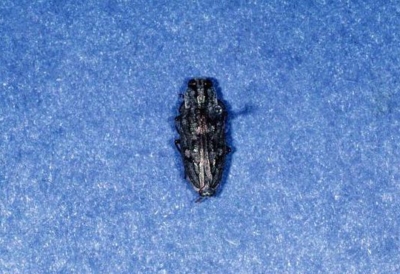Flatheaded appletree borer is a native pest of deciduous trees. During high infestations it will seek out not only stressed, sick, damaged trees but also healthy trees. It can cause significant damage in nurseries and urban landscapes.
The flatheaded appletree borer has one generation per year. Female adult beetles lay eggs on shade trees during spring and summer. They are dark brown in color, “bullet-shaped”, and they have irregular brassy spots on their wings. The abdomen is metallic purple.
The female beetle will lay her yellow eggs in cracks on trees and this is a clear sign that the tree is unhealthy. The eggs are laid between the months of May and August and that is how the larvae is brought into the world. The eggs hatch about seven days later and the larvae bore into the tree underneath the egg. The larvae is around half an inch in length and they are legless. In color, they can be yellow or whi
Inside the tree, larvae will start actively feeding which continues through winter months. Larvae pupate in late spring to early summer and adult emerges. D-shaped exit holes is a clear symptom of the flatheaded appletree borer infestation. The most damage is done during larvae stage. It feeds in the cambium layer and interferes with nutrient flow throughout the tree.
Flatheaded appletree borer can be found on the entire continental United States as well as Canada. It is a serous pest capable of killing a young tree in one season. Signs of infestation are galleries, oozing of sap. Management options include monitoring (trapping), cultural (keeping your trees healthy to withstand insect attack), biological, chemical controls (tree spraying).
If you think your trees are infested with flatheaded appletree borer, call SprayTech for treatment options.
Comments are closed.